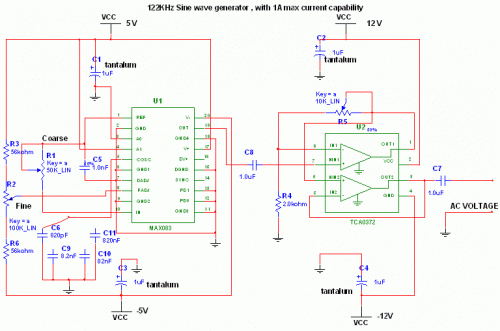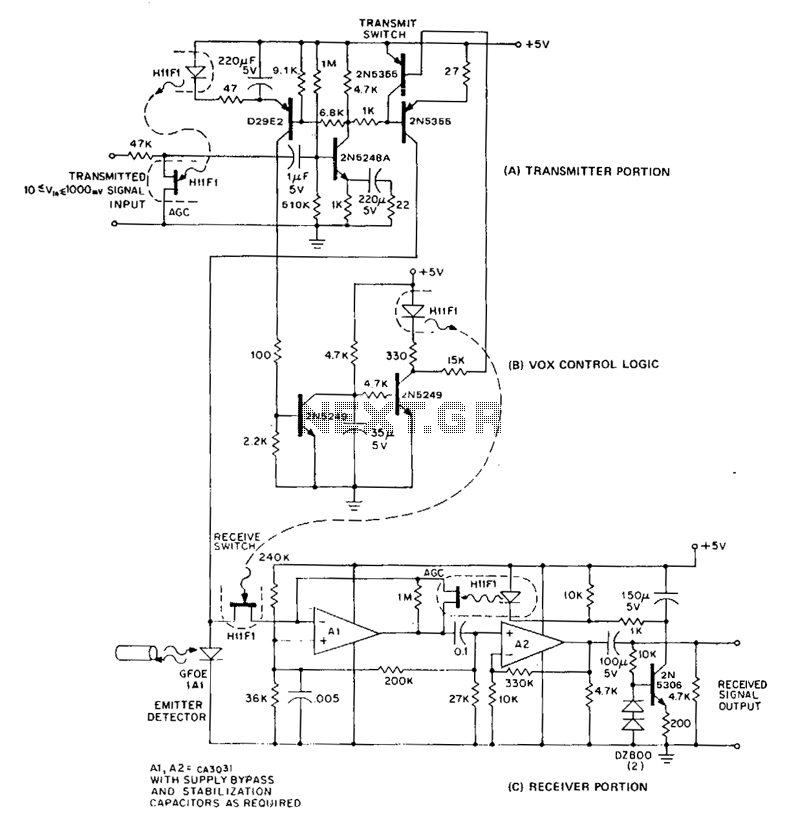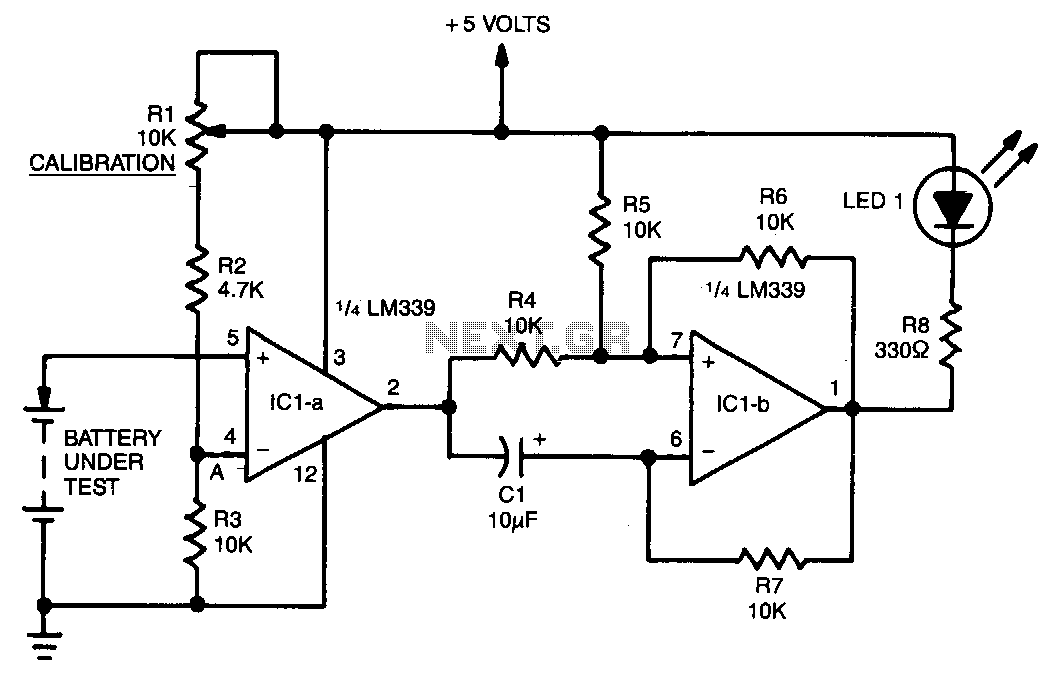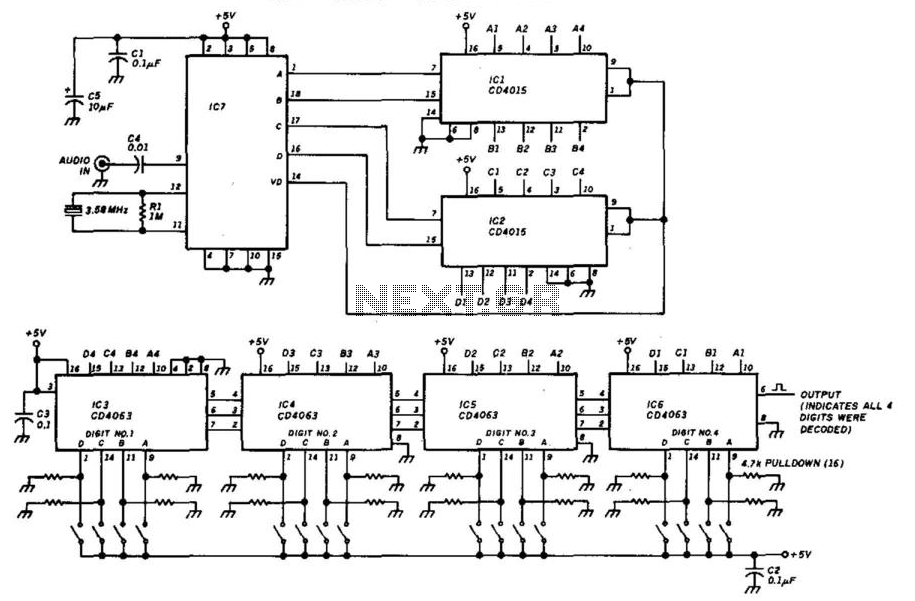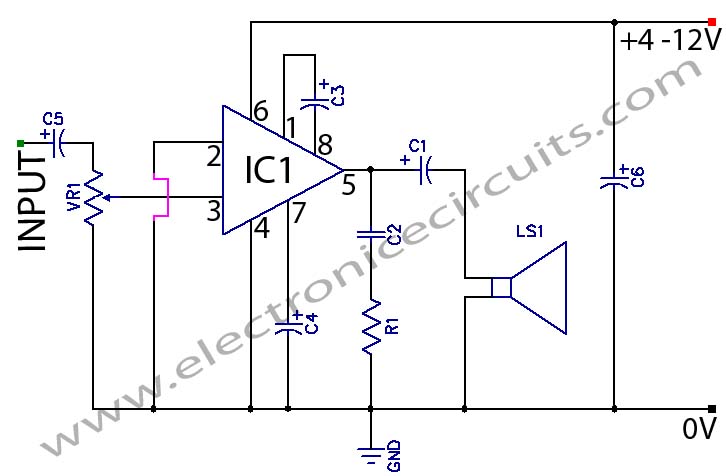
LOW DRIFT 7MHz VFO
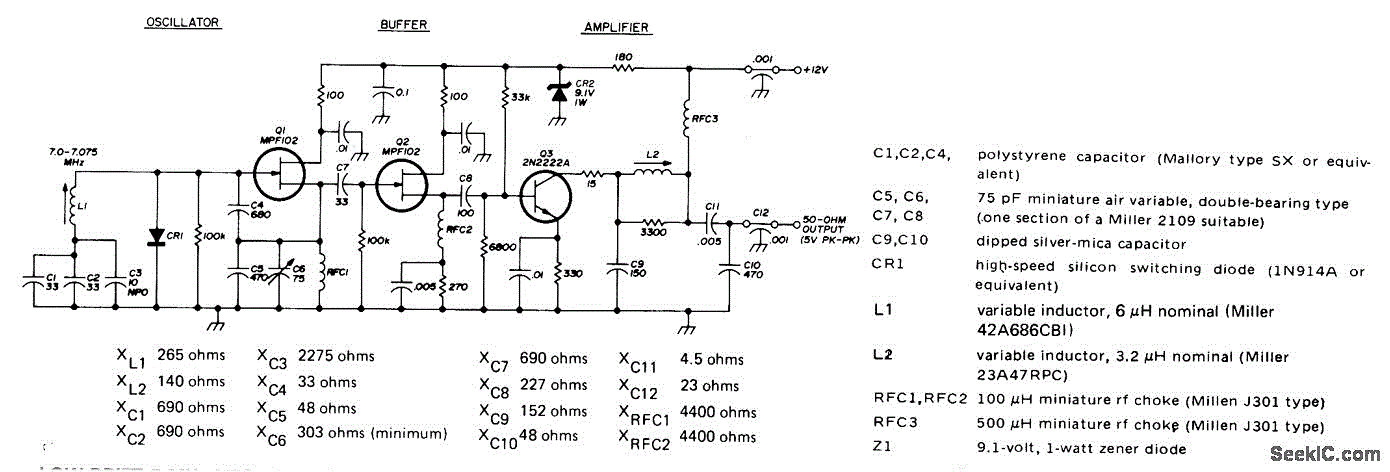
The low-drift solid-state design for the 40-meter band exhibits a maximum frequency change of only 25 Hz from cold start to full warm-up at 25 degrees Celsius. After stabilization, the maximum frequency hunting is limited to 5 Hz. Drift is minimized by paralleling two or more capacitors in critical circuit areas. A series-tuned Colpitts oscillator is followed by two buffer stages, with the second stage providing sufficient amplification.
The low-drift solid-state design focuses on achieving high stability in frequency output, which is crucial for effective operation in the 40-meter amateur radio band. The use of a Colpitts oscillator, known for its frequency stability and low phase noise, serves as the core frequency-generating component. This oscillator configuration typically employs a combination of inductors and capacitors to set the desired oscillation frequency, with the series-tuning approach enhancing selectivity and minimizing unwanted harmonics.
The design incorporates two buffer stages following the oscillator. The first buffer stage isolates the oscillator from subsequent circuitry, preventing loading effects that could alter the frequency output. The second buffer stage is engineered to provide adequate amplification, ensuring that the signal remains robust enough to drive further processing stages or output devices without distortion.
To achieve minimal drift and frequency hunting, the circuit employs a strategy of paralleling capacitors in critical areas. This method reduces the equivalent series resistance (ESR) and enhances temperature stability, which is vital for maintaining consistent performance across varying environmental conditions. The careful selection of capacitor types and values can significantly influence the overall drift characteristics of the oscillator circuit.
In summary, this low-drift solid-state design for the 40-meter band is characterized by its stable frequency output, minimal drift, and effective signal amplification, making it suitable for reliable communication applications in amateur radio and other related fields.Low-drift solid-state design for 40-meter band has maximum change of only 25 Hz from cold start to full warm-up at 25?. After stabilization, maximum hunting is 5 Hz. Drift is minimized by paralleling two or more capacitors in critical parts of circuit. Series-tuned Colpitts oscillator is followed by two buffer stages, with second providing enough amplificati..
🔗 External reference
The low-drift solid-state design focuses on achieving high stability in frequency output, which is crucial for effective operation in the 40-meter amateur radio band. The use of a Colpitts oscillator, known for its frequency stability and low phase noise, serves as the core frequency-generating component. This oscillator configuration typically employs a combination of inductors and capacitors to set the desired oscillation frequency, with the series-tuning approach enhancing selectivity and minimizing unwanted harmonics.
The design incorporates two buffer stages following the oscillator. The first buffer stage isolates the oscillator from subsequent circuitry, preventing loading effects that could alter the frequency output. The second buffer stage is engineered to provide adequate amplification, ensuring that the signal remains robust enough to drive further processing stages or output devices without distortion.
To achieve minimal drift and frequency hunting, the circuit employs a strategy of paralleling capacitors in critical areas. This method reduces the equivalent series resistance (ESR) and enhances temperature stability, which is vital for maintaining consistent performance across varying environmental conditions. The careful selection of capacitor types and values can significantly influence the overall drift characteristics of the oscillator circuit.
In summary, this low-drift solid-state design for the 40-meter band is characterized by its stable frequency output, minimal drift, and effective signal amplification, making it suitable for reliable communication applications in amateur radio and other related fields.Low-drift solid-state design for 40-meter band has maximum change of only 25 Hz from cold start to full warm-up at 25?. After stabilization, maximum hunting is 5 Hz. Drift is minimized by paralleling two or more capacitors in critical parts of circuit. Series-tuned Colpitts oscillator is followed by two buffer stages, with second providing enough amplificati..
🔗 External reference
